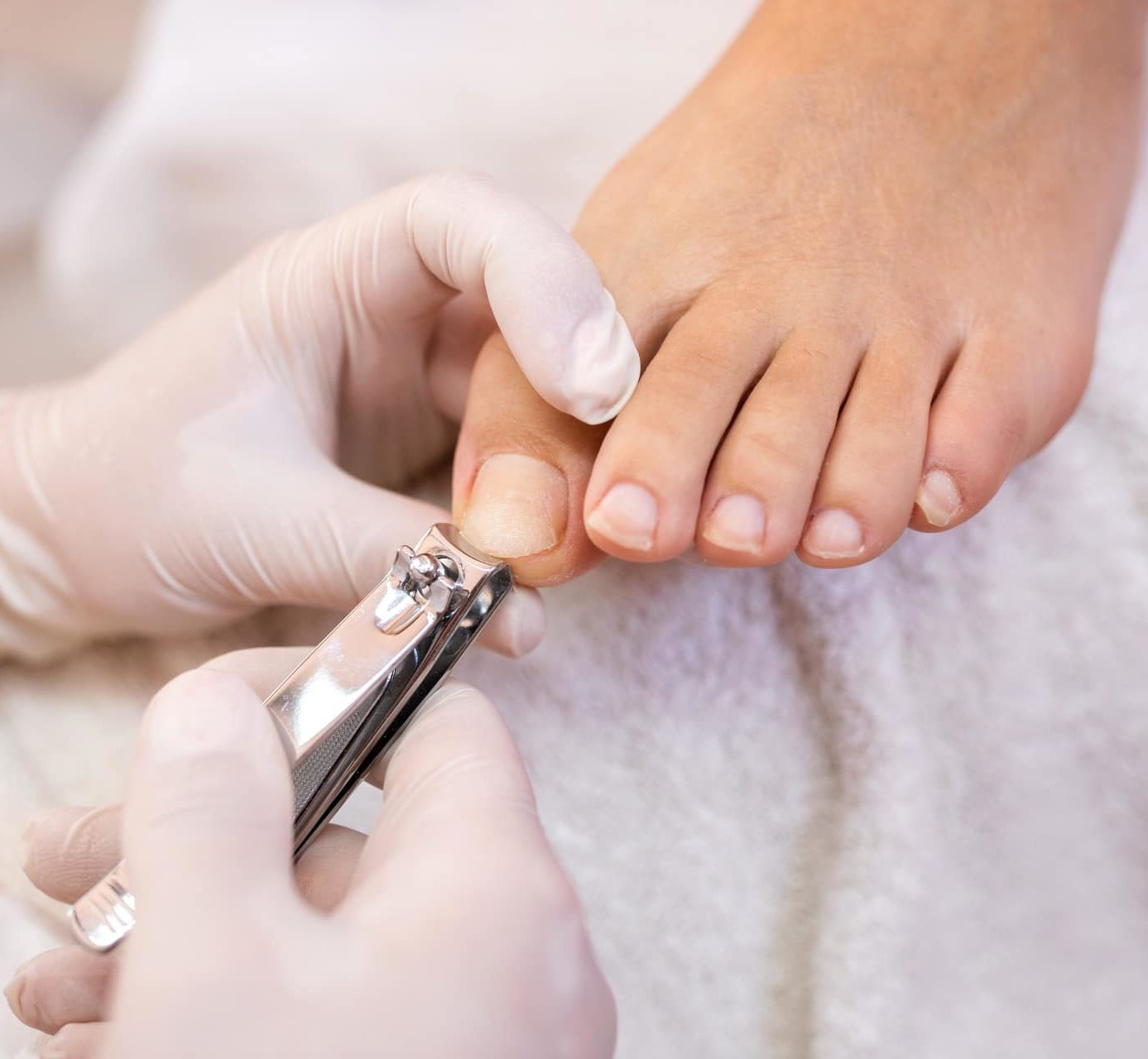Ingrown Toenails
The function of toenails is simple—slowly grow in the right direction, while protecting the toes. But what happens when they fail at effectively doing their job? An ingrown toenail.
Ingrown toenails develop when the edge or corner of the nail takes an unwelcome detour into the soft flesh of the toe. This can cause pain, tenderness, swelling, and—when left untreated—even a nasty infection.
Unfortunately, many of us ignore painful symptoms in our feet and ankles, including those associated with ingrown toenails. Maybe you have noticed that the side of your big toe has been feeling a little sore or maybe the discomfort has kept you from wearing your favorite pair of shoes.
So what do you do? Type your symptoms into Dr. Google to find out what could possibly be causing this annoying problem – it’s a no brainer, right?
Well, not really.
Though sometimes an ingrown toenail may not be a big deal, in certain cases, this condition can be a little more complicated than you might think. In fact, if left untreated and allowed to grow and embed itself deeper into your toe, an ingrown toenail can result in a bone infection or even blood toxicity when it breaks the skin! This is especially true if you also happen to have toenail fungus or athlete’s foot.
Who would’ve thought that an ingrown toenail could be so dangerous, right?
And, if you are living with diabetes, you are at an even higher risk of developing infections and serious complications from something that shouldn’t be that big of a deal in the first place – diabetes often comes with poor blood circulation and peripheral neuropathy, making it hard for the body to heal and protect itself.
But What Causes Ingrown Toenails?
There are many factors to take into consideration, like:
- Trimming toenails too short or in a curve.
- Shoes that are too tight or too short.
- Stubbing or injuring the toenail.
- Fungal infections that change the structure of the nail.
- Heredity foot structures, like naturally curved nails.
But if you don’t notice any visible signs of infection and you don’t duffer from kind of circulatory disorder, like diabetes, then at-home treatment methods may be able to take care of the problem.
How Can You Treat Ingrown Toenails At Home?
To start, you should soak your feet in warm, soapy water several times per day. This will help relieve any pain or discomfort you may be experiencing. Once you are done soaking your feet, apply some antibiotic cream to the area and bandage the toe to help protect it from any potential bumps and jostles. You should also avoid wearing tight, restrictive shoes.
And never attempt to perform “bathroom surgery” – trying to cut or remove the toenail yourself is extremely dangerous and will likely make matters much, much worse.
Now, if you notice any signs of infection (redness or drainage), you are experiencing significant pain, home-care attempts have been unsuccessful, or if you have diabetes, then it’s time to pull the plug on home-care treatment and come visit our Bloomington office right away.
Getting an ingrown toenail fixed by a podiatrist is usually a quick and relatively painless procedure. Even better, it can bring you relief almost instantly!
How Can We Help You Treat Ingrown Toenails?
If symptoms persist after two or more days of home treatment, or you have diabetes, you should call our office right away to schedule a consultation.
Below are some of the options we provide:
- Carefully lifting the nail to allow extra relief and faster healing.
- Partial removal of the nail with a local anesthetic.
- Prescribed topical and oral medications.
You can also have your toenail or corner of your toenail removed on a more lasting basis – we can easily perform that here in the office by adding a chemical acid medication to the nail root. This procedure, called a matrixectomy, is over 90 percent effective at permanently preventing ingrown toenails from returning!
During a matrixectomy, we will inject your toe with local anesthesia and apply a compression band around your toe to reduce bleeding. Next, we will remove the embedded piece of nail from the surrounding soft tissue and apply a phenol solution to the nail matrix using a cotton swab.
Finally, we will dress the surgical site in gauze and provide you with aftercare instructions. You even get to pick the bandage color.
And all of this can be done in 20 minutes or less!
Don’t Delay Treatment!
Let us help you make ingrown toenails a problem of the past.
If you are ready to finally recruit some help for your ingrown toenail, you can trust our expert doctors here at Heartland Foot & Ankle Associates. All you have to do is give us a call at (309) 661-9975 to schedule an appointment, or simply fill out our handy contact form online today!
Pricing Information
Ingrown Toenails
Initial Visit
- Examination and evaluation by the physician – $246.00
- Removal of ingrown/infected nail – $269.00
- Post Op Kit and Toe Cap – $50.50
Follow-up visits (Most Require 1-3 Visits)
- Examination and evaluation by physician – $147.00
- Chemical removal of ingrown nail (if needed) – $490.00
- Topical Medications and Treatments – $30.30

